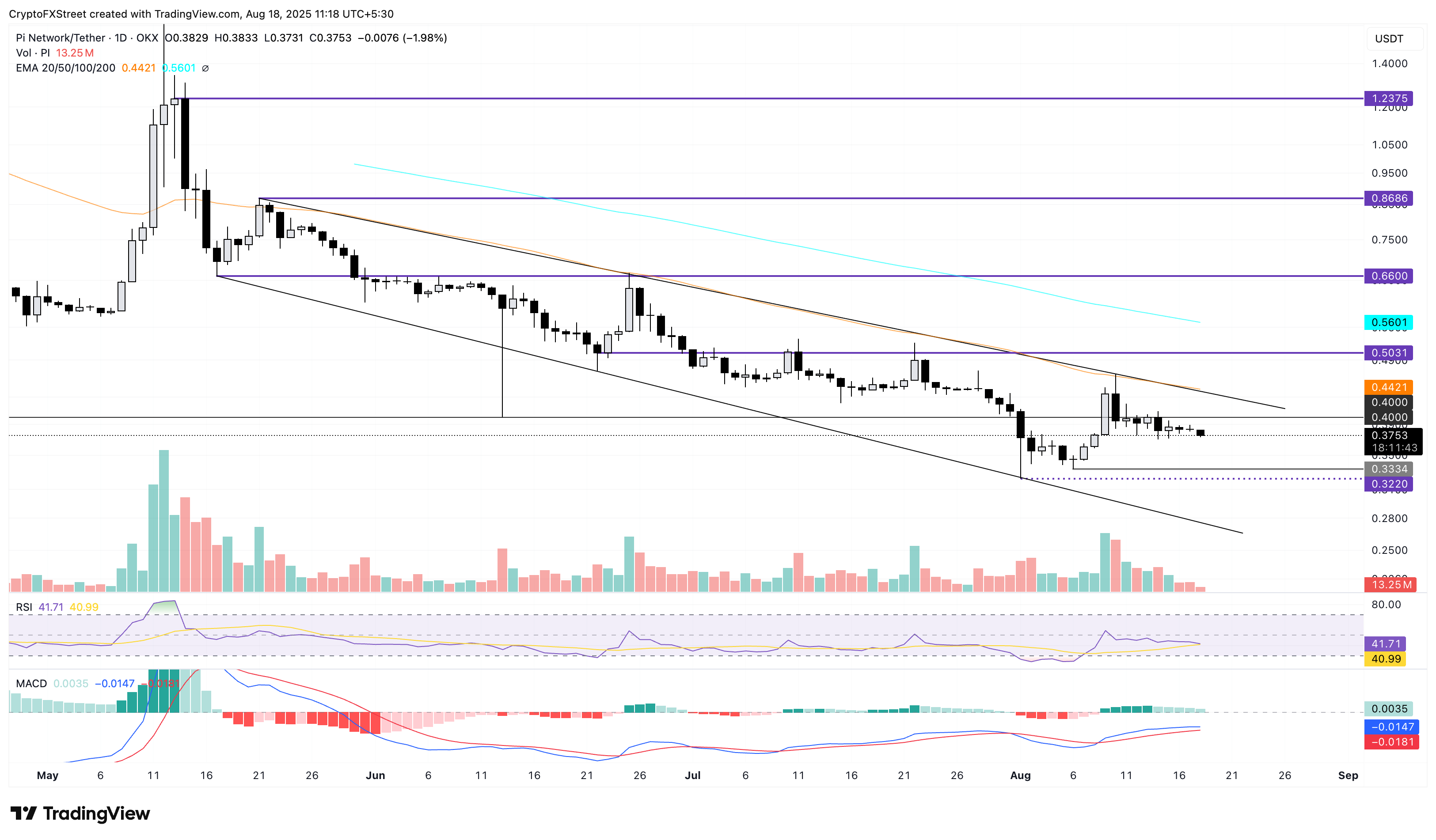Pi Network Price Forecast: Downside risk holds even as Pi Moderator hints at second migration in 2025
- Pi risks further losses within a falling channel pattern as bullish momentum fades.
- The announcement of Pi Hackathon 2025 received adverse feedback from the community.
- Pi Moderator hints at the second migration of PI tokens from testnet to mainnet, possibly in 2025.
Pi Network (PI) edges lower by over 1% at press time on Monday, shifting from a consolidation phase. The downside risk escalates as PI forms a falling channel, ignoring the announcement of Pi Hackathon 2025 and a moderator hinting at a potential second migration event.
Pi Hackathon struggles to uplift community sentiment
Pi Network announced the start of Pi Hackathon 2025 registration on Friday, aiming to boost Mainnet app development with real-world use cases by incentivizing developers. The event has a total prize of 160,000 Pi and requires a working app and demo video by October 15.

The community shared adverse feelings about the Pi Hackathon. Jatin Gupta, a Pioneer, questioned the sudden halt in monthly hackathons from 2023 and anticipates a similar failure. Pioneers are PI token holders or active miners.
Pi moderator hints at second migration event
Pi moderator, one of many volunteers selected by the Pi core team, has replied “I do think it can” to a community member’s question about a possible second migration event this year. The hint comes ahead of the moderators' meeting with Pi Network founders, Nicolas Kokkalis and Chengdiao Fan. The meeting dates are yet to be announced.
PI risks further losses within a falling wedge
PI token edges lower by over 1% at press time on Monday within a falling wedge pattern on the 4-hour chart. The declining trend marks a shift from the short-lived consolidation near the $0.40 level.
The intraday pullback increases the downside risk, with the next potential targets at the $0.3334 support level marked by the August 6 low.
The momentum indicators indicate that the path of least resistance is downward. On the 4-hour chart, the Relative Strength Index (RSI) stands at 41, sloping downward, indicating a decline in buying pressure.
The Moving Average Convergence Divergence (MACD) inches closer to its signal line, risking a crossover. A rise in red histogram bars below the signal line would indicate a bearish shift in trend momentum.

PI/USDT daily price chart.
On the contrary, a pushback in PI above $0.4000 level could extend the uptrend to the 50-period Exponential Moving Average (EMA) at $0.4421.
Bitcoin, altcoins, stablecoins FAQs
Bitcoin is the largest cryptocurrency by market capitalization, a virtual currency designed to serve as money. This form of payment cannot be controlled by any one person, group, or entity, which eliminates the need for third-party participation during financial transactions.
Altcoins are any cryptocurrency apart from Bitcoin, but some also regard Ethereum as a non-altcoin because it is from these two cryptocurrencies that forking happens. If this is true, then Litecoin is the first altcoin, forked from the Bitcoin protocol and, therefore, an “improved” version of it.
Stablecoins are cryptocurrencies designed to have a stable price, with their value backed by a reserve of the asset it represents. To achieve this, the value of any one stablecoin is pegged to a commodity or financial instrument, such as the US Dollar (USD), with its supply regulated by an algorithm or demand. The main goal of stablecoins is to provide an on/off-ramp for investors willing to trade and invest in cryptocurrencies. Stablecoins also allow investors to store value since cryptocurrencies, in general, are subject to volatility.
Bitcoin dominance is the ratio of Bitcoin's market capitalization to the total market capitalization of all cryptocurrencies combined. It provides a clear picture of Bitcoin’s interest among investors. A high BTC dominance typically happens before and during a bull run, in which investors resort to investing in relatively stable and high market capitalization cryptocurrency like Bitcoin. A drop in BTC dominance usually means that investors are moving their capital and/or profits to altcoins in a quest for higher returns, which usually triggers an explosion of altcoin rallies.



